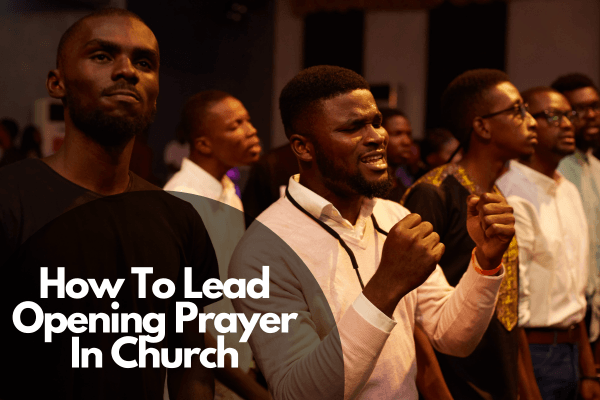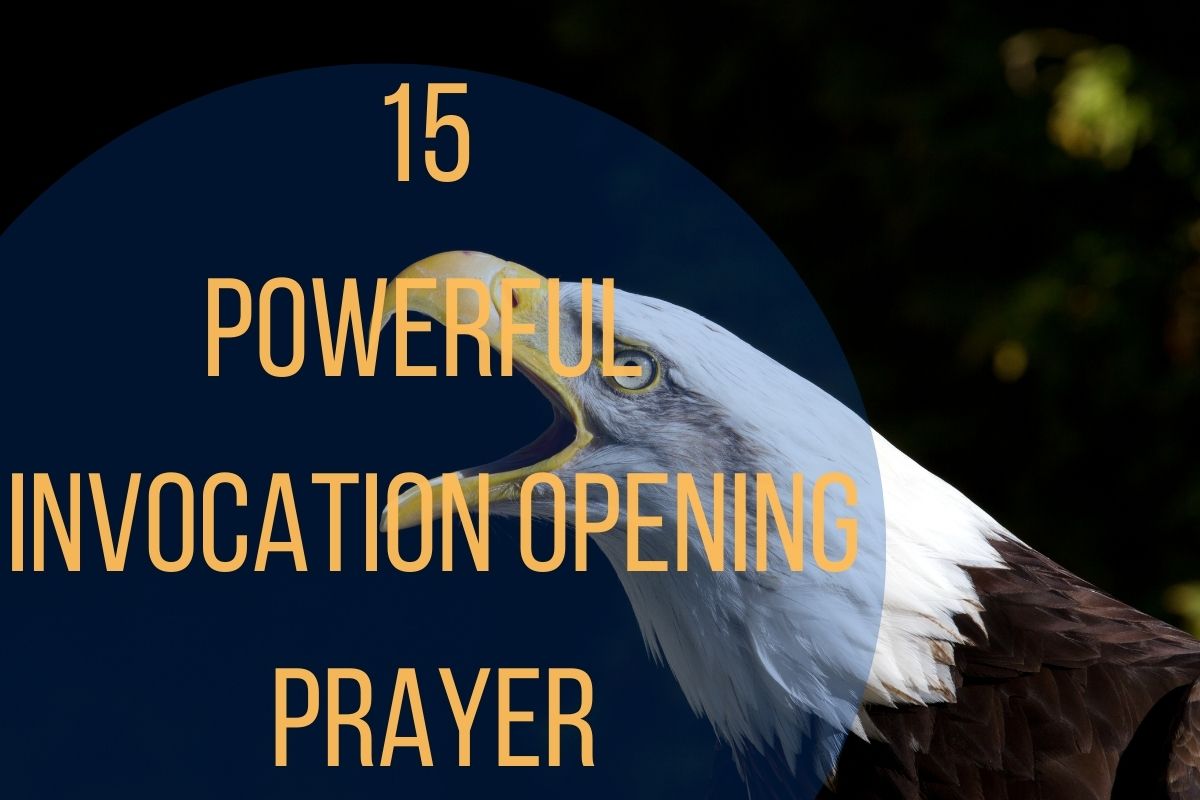The opening prayer in a church service holds a special place, setting the tone for the congregation’s worship experience. It’s a moment of collective reflection, gratitude, and spiritual preparation. If you’ve been entrusted with the responsibility of leading the opening prayer, it’s a significant role that comes with its own set of considerations and practices. In this article, we’ll explore how to lead an opening prayer in church effectively and with grace.
How To Lead Opening Prayer In Church
1. Recognizing the Responsibility
Leading the opening prayer is a privilege but also a solemn responsibility. It means setting the spiritual atmosphere for the entire congregation, aligning hearts and minds towards worship.
2. The Role of a Prayer Leader
As a prayer leader, your role is to act as a conduit between the congregation and the divine. You are the voice through which the congregation collectively expresses their hopes, thanks, and petitions.
Preparation for the Prayer
1. Choosing the Right Moment
The timing of the opening prayer is crucial. It should be a moment when the congregation is settling into the worship mode. Ensure it’s not rushed but harmoniously integrated into the service.
2. Creating a Serene Atmosphere
Before you lead the prayer, help create an atmosphere of reverence and focus. Encourage the congregation to settle their thoughts and prepare their hearts.
3. Aligning with the Day’s Theme
If there’s a specific theme or purpose for the service, consider aligning your prayer with it. This helps in creating a sense of cohesion and relevance.
Crafting Your Prayer
1. Structure of an Opening Prayer
A typical opening prayer has a structure that includes an acknowledgment of God’s presence, expressions of gratitude, and requests for guidance and blessings.
2. Expressing Gratitude and Praise
Begin with expressions of gratitude and praise. Thank God for another day of life and the opportunity to gather as a congregation.
3. Seeking Blessings and Guidance
After expressing gratitude, seek God’s blessings for the service, the congregation, and the challenges they may be facing. Ask for guidance to make the service meaningful.
Personalization and Connection
1. Speaking from the Heart
While there’s a structure to follow, allow your personal connection with God to shine through. Speak from the heart, making the prayer sincere and relatable.
2. Connecting with the Congregation
Ensure that your prayer resonates with the congregation. Speak to their collective experiences and aspirations, making the prayer more meaningful for everyone.
3. Making the Prayer Relatable
Address common concerns, joys, and challenges that people face in their everyday lives. This makes the prayer more relatable and touching.
Delivery and Presentation
1. Clarity and Audibility
Speak clearly and audibly. The congregation should be able to hear and understand every word of the prayer.
2. Confidence and Calmness
Project confidence in your words, but also maintain a calming and reassuring tone. Your demeanor can influence the congregation’s mood.
3. Avoiding Distractions
Ensure that your delivery is free from distractions. This includes avoiding long pauses, fumbling, or unnecessary repetition.
Inclusivity and Sensitivity
1. Acknowledging the Diverse Congregation
Recognize the diversity within the congregation. Acknowledge that people come from various walks of life, and their experiences may differ.
2. Using Inclusive Language
Use language that is inclusive and not exclusive. Address God in a way that is respectful to different beliefs and perspectives.
3. Sensitivity to Current Events
Be sensitive to current events and concerns that might be affecting the congregation. Include prayers for those facing difficulties or tragedies.
Engaging the Congregation
1. Active Participation
Encourage the congregation to actively participate in the prayer. This can be done by inviting them to say “Amen” or “Let it be so” at various points in the prayer.
2. Promoting Unity and Focus
Your prayer should promote unity and focus. It should be a unifying moment where everyone comes together in a shared spiritual experience.
3. Inspiring Reflection and Intention
Encourage the congregation to reflect on the themes of the prayer and set their own intentions for the service.
Overcoming Nervousness
1. Tips for Managing Stage Fright
If you’re nervous about leading the prayer, consider tips for managing stage fright. This might include deep breathing, positive visualization, or prayer itself.
2. Channeling Nervous Energy
Rather than being hindered by nervousness, channel that energy into sincerity and humility. It’s okay to be vulnerable in your prayer.
3. Practicing Mindfulness
Practicing mindfulness and being present in the moment can help calm your nerves and allow you to focus on the prayer itself.
Closing the Prayer
Transition to the Main Service
As you conclude the prayer, smoothly transition to the main service. Lead the congregation into the next phase of the worship experience.
Leaving a Positive Impact
The closing of your prayer should leave a positive and uplifting impact on the congregation. It’s the last thing they hear before moving into the service, so make it memorable.
Common Pitfalls to Avoid
Rushing Through the Prayer
Avoid rushing through the prayer. Take your time and speak deliberately to ensure the congregation can follow along.
Overloading with Personal Anecdotes
While personalization is important, avoid overloading the prayer with excessive personal anecdotes or stories. Keep the focus on the congregation’s needs.
Being Overly Lengthy or Verbose
Strike a balance between depth and brevity. Being overly lengthy or verbose can lose the congregation’s attention.
Seeking Feedback and Improvement
Embrace Constructive Criticism
Be open to feedback from other congregants or church leaders. Constructive criticism can help you improve your prayer leadership.
Continuous Growth as a Prayer Leader
Recognize that leading prayers is a continual journey of growth and improvement. Each experience is an opportunity to refine your skills.
Respecting Tradition and Flexibility
Balancing Tradition with Relevance
Balance traditional elements of prayer with contemporary relevance. Ensure that the congregation finds meaning in the words spoken.
Adapting to Evolving Needs
Be open to adapting your approach as the needs and dynamics of the congregation evolve. Flexibility is key in effective prayer leadership.
Bible Verses Related to Leading Prayers In a Church and the Significance of Prayer
1. 1 Timothy 2:1-2 (NIV)
“I urge, then, first of all, that petitions, prayers, intercession, and thanksgiving be made for all people— for kings and all those in authority, that we may live peaceful and quiet lives in all godliness and holiness.”
This verse emphasizes the importance of prayer for all people, including those in authority, and its role in promoting peace and godliness.*
2. Matthew 6:5-6 (NIV)
“And when you pray, do not be like the hypocrites, for they love to pray standing in the synagogues and on the street corners to be seen by men. Truly I say to you, they have their reward. But you, when you pray, go into your room, and when you have shut your door, pray to your Father who is in secret, and your Father who sees in secret will reward you openly.”
This verse highlights the importance of sincerity and humility in prayer, even in a church setting.*
3. Colossians 4:2 (NIV)
“Devote yourselves to prayer, being watchful and thankful.”
This verse encourages continuous devotion to prayer, and being watchful and thankful, which is relevant for prayer leaders.
4. Philippians 4:6 (NIV)
“Do not be anxious about anything, but in every situation, by prayer and petition, with thanksgiving, present your requests to God.”
This verse underscores the power of prayer in seeking God’s guidance and presenting our requests with thanksgiving.
5. James 5:16 (NIV)
“Therefore confess your sins to each other and pray for each other so that you may be healed. The prayer of a righteous person is powerful and effective.”
This verse highlights the effectiveness of the prayers of righteous individuals and the concept of praying for one another.
6. 1 Thessalonians 5:16-18 (NIV)
“Rejoice always, pray continually, give thanks in all circumstances; for this is God’s will for you in Christ Jesus.”
These verses emphasize the continuous and joyful nature of prayer, along with the importance of gratitude.
7. Psalm 5:3 (NIV)
“In the morning, Lord, you hear my voice; in the morning I lay my requests before you and wait expectantly.”
This verse reflects the practice of morning prayers and laying one’s requests before the Lord.
Closing Thoughts
In the role of leading the opening prayer in church, you become an instrument of unity and spiritual guidance. It’s a fulfilling and sacred task that requires sincerity, preparation, and connection. As you continue in this role, remember that your words have the power to inspire and uplift the congregation, setting the stage for a meaningful worship experience.
Conclusion
Leading the opening prayer in church is an honorable responsibility, and with the right approach, it can be a spiritually enriching experience for both you and the congregation. By recognizing your role, preparing thoughtfully, and delivering the prayer with sincerity, you can set a positive tone for the worship service, fostering unity, and connecting with the hearts of the congregation.
In your journey as a prayer leader, continue to seek growth and improvement, embrace feedback, and remain flexible to the evolving needs of the congregation. Through these efforts, you’ll not only lead prayers effectively but also leave a lasting impact on the spiritual journey of the church community.
FAQs
1. How can I overcome nervousness when leading the opening prayer?
Overcoming nervousness can be achieved through techniques such as deep breathing, positive visualization, and mindfulness. Channel nervous energy into sincerity.
2. What should I do if I make a mistake during the opening prayer?
If you make a mistake, don’t dwell on it. Simply continue with the prayer. The congregation is often understanding of genuine human moments.
3. How can I balance traditional elements of prayer with contemporary relevance?
To strike this balance, focus on the timeless themes and values while addressing the current concerns and experiences of the congregation.







